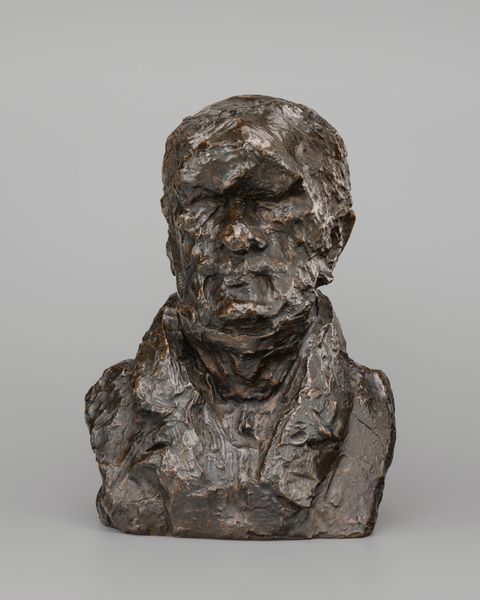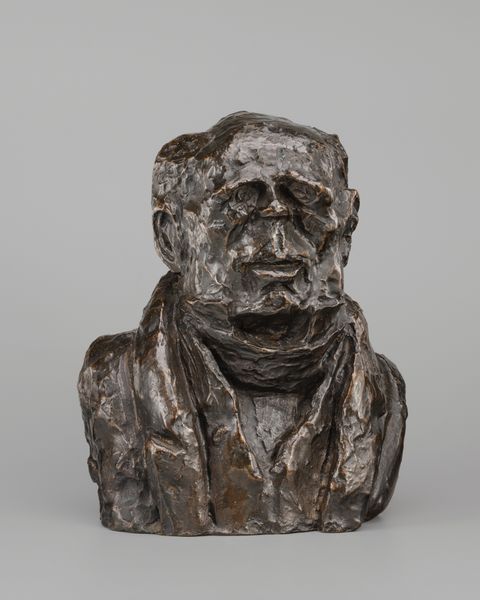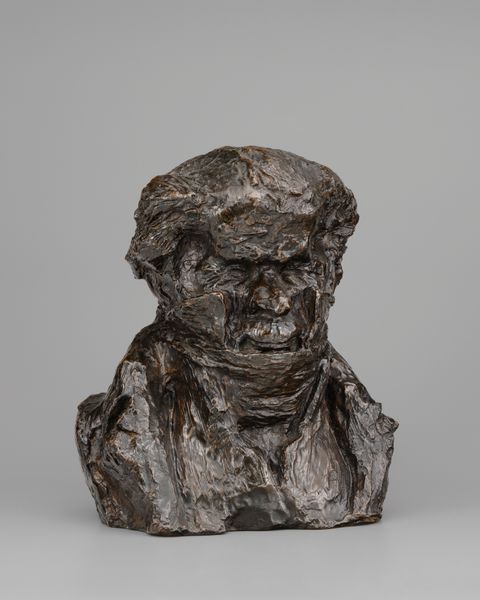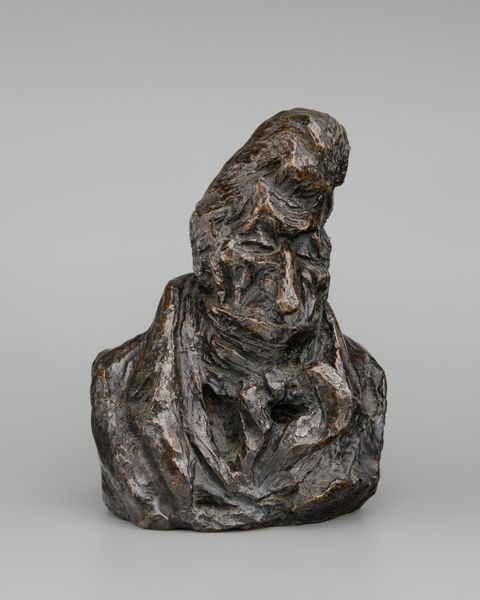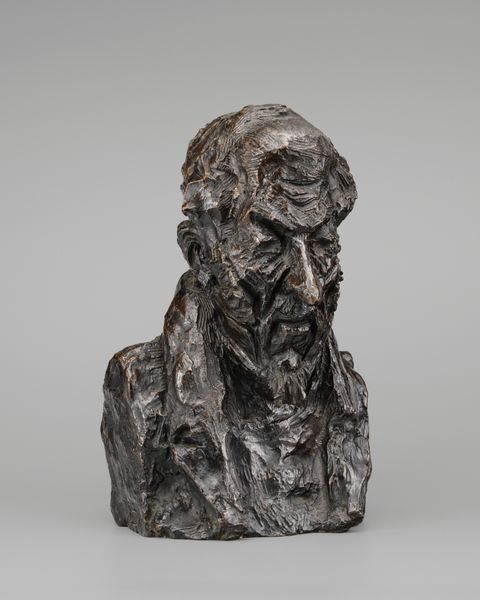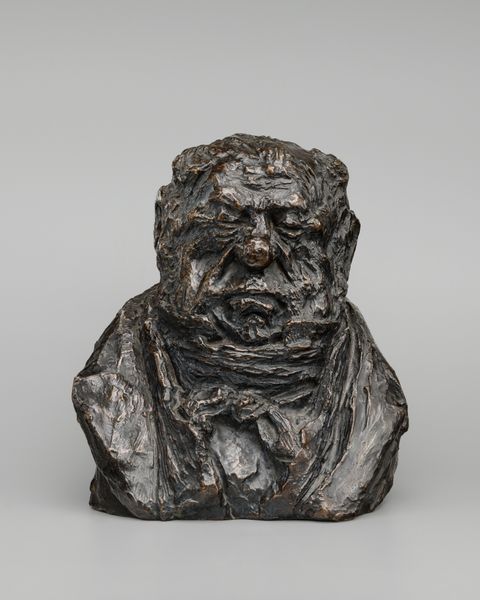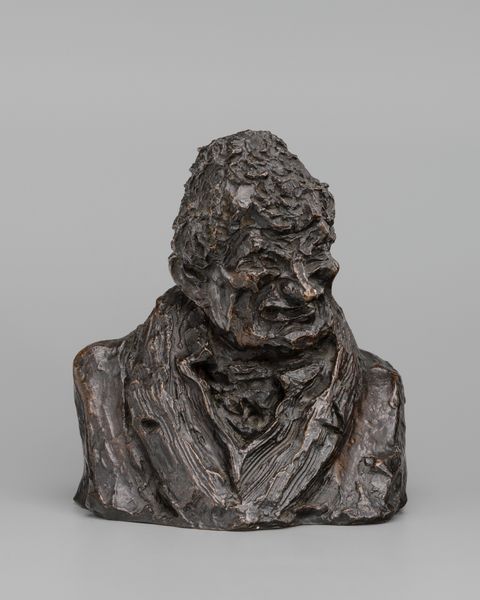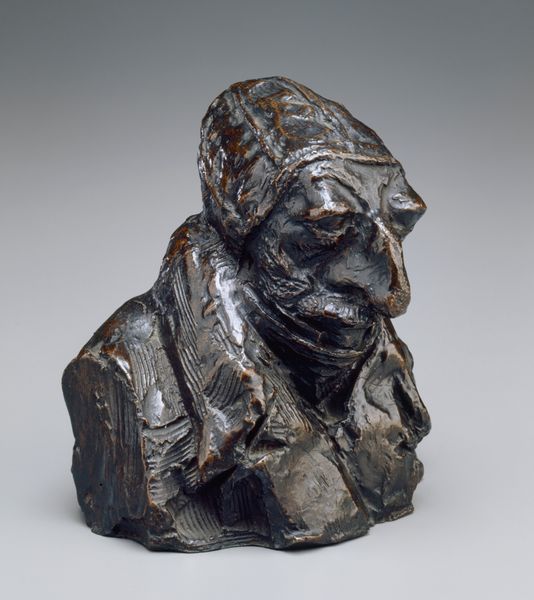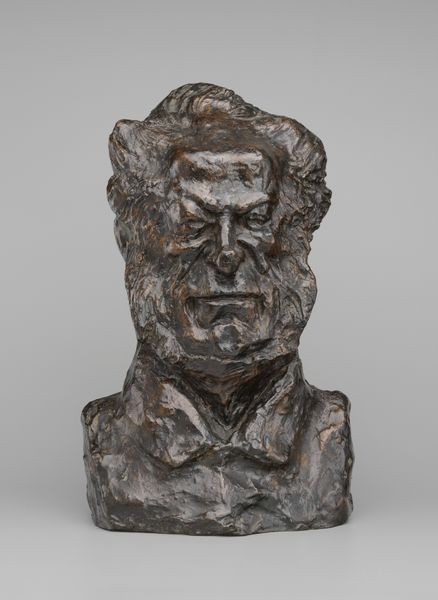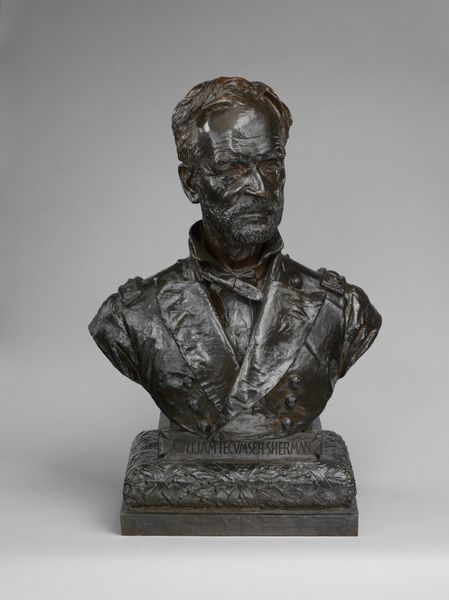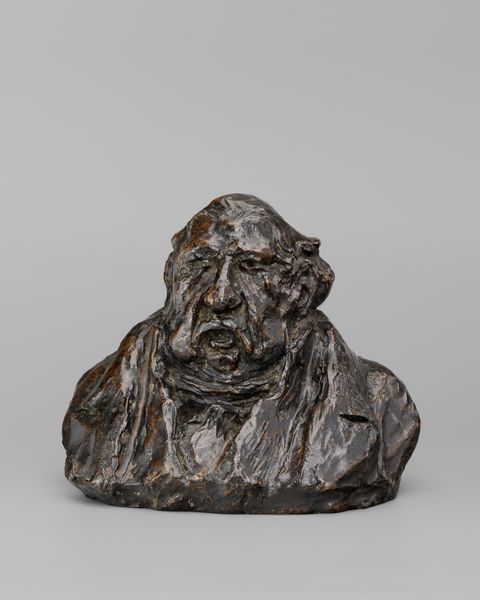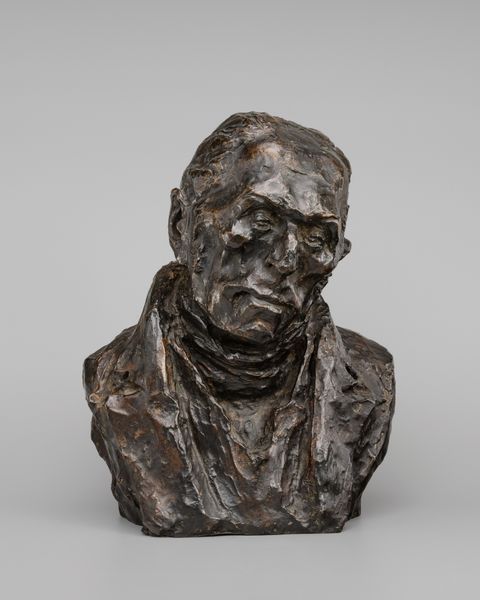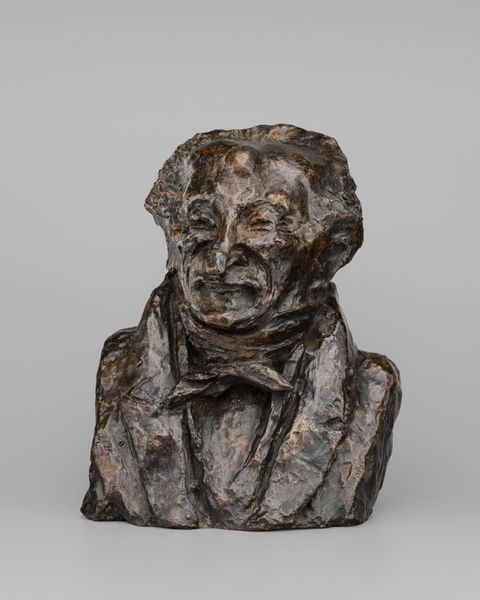
bronze, sculpture
#
portrait
#
sculpture
#
bronze
#
sculpture
#
realism
Dimensions: overall: 19.4 x 15.9 x 10.2 cm (7 5/8 x 6 1/4 x 4 in.)
Copyright: National Gallery of Art: CC0 1.0
Curator: Standing before us, we have a bronze sculpture by Honoré Daumier, dating from approximately 1832 to 1840. The work is entitled "Jean Vatout." Editor: The texture grabs me immediately; it’s rugged, almost volcanic. You can feel Daumier’s hands at work, manipulating the clay before it became this bronze. Curator: Indeed, the rough surface is a hallmark of Daumier's sculptural process. Consider how bronze, often associated with permanence and grandeur, is used here to capture a rather unidealized, perhaps even caricatured, depiction. He presents Vatout in a very human light. Editor: It's interesting, that choice of subject. Who was Jean Vatout, and what did he represent to Daumier? The furrowed brow and slightly downturned mouth—they convey a certain world-weariness, a knowledge. Is this a man who carries the weight of his time? Curator: Vatout was a writer and librarian. It's easy to think of Daumier critiquing society through his art, particularly during this period, he captures figures connected to the literary and political circles, reflecting the ferment of ideas during the July Monarchy in France. Think about the political cartoons of the period, often published using new printing technologies; his sculptures serve as similar critiques, materialized. Editor: Absolutely. There’s a sense of realism, but it’s heightened. Almost a grotesque realism that invites you to interpret. The symbol of a librarian, keeper of knowledge – perhaps a suggestion of the burdens and secrets contained within. Bronze too— a strong metal— for an equally resolute mind? Curator: And considering the industrial means used for mass production during this era, Daumier’s choice of sculpture –a far more time consuming technique– feels like a purposeful commitment to artistic expression. His commitment emphasizes both skill and social commentary over faster profits from a cheaper material. Editor: Yes, that tactile connection really does bring us into dialogue with Daumier himself, doesn't it? We not only view Vatout's likeness, but also see his cultural context mirrored back. Curator: It’s a testament to the power of material to communicate so much about artistic intention and cultural conditions. Editor: Quite profound, really, how Daumier chose his medium to amplify the image's meaning through generations.
Comments
No comments
Be the first to comment and join the conversation on the ultimate creative platform.
